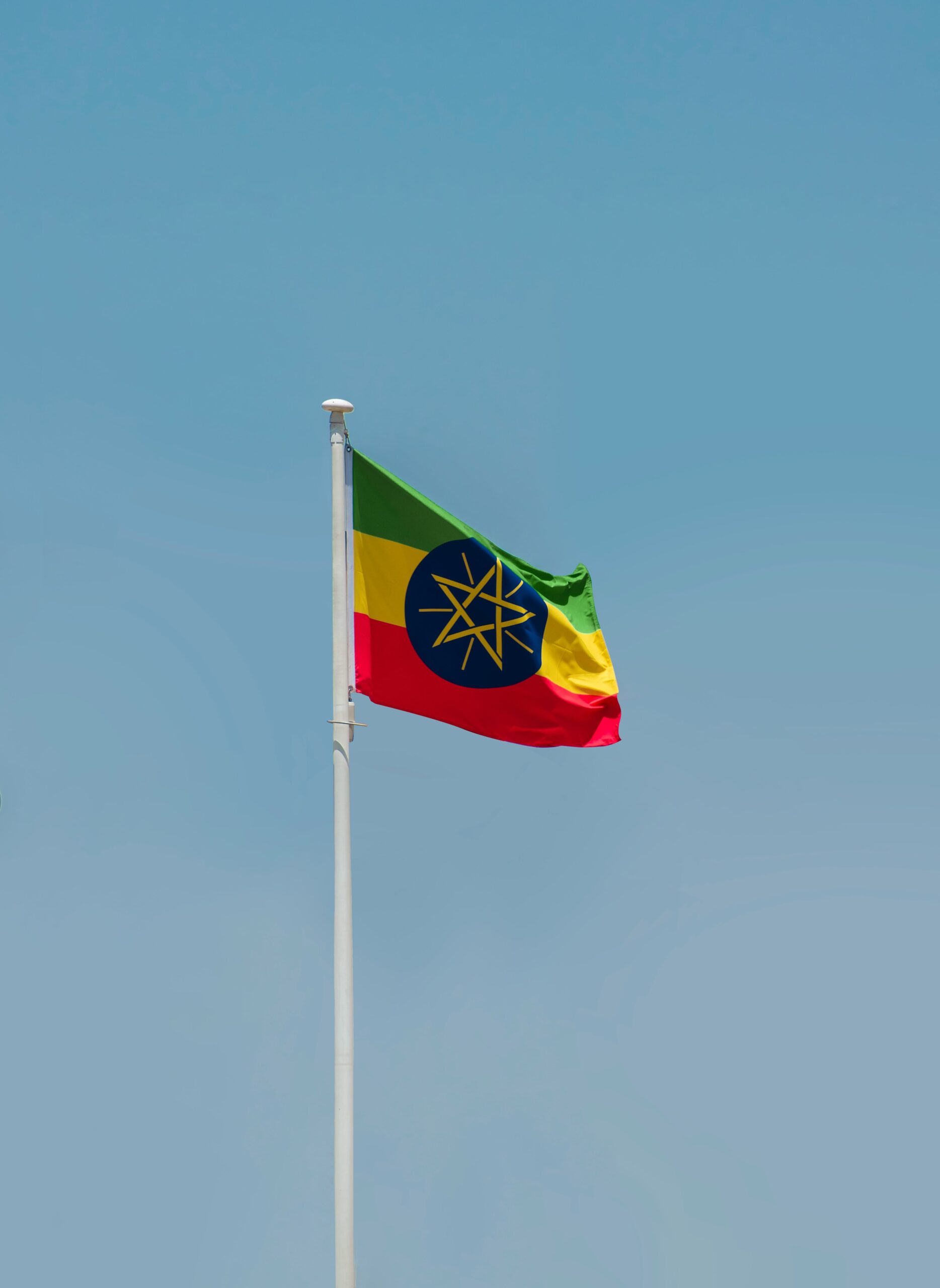What Are Some UNESCO World Heritage Sites In Ethiopia?
Discovering the UNESCO World Heritage Sites in Ethiopia
Ethiopia, a land of rich history and cultural heritage, boasts several UNESCO World Heritage Sites that showcase the country’s unique past and natural beauty. These sites provide a glimpse into Ethiopia’s diverse landscapes, ancient traditions, and architectural marvels. Let’s explore some of the most remarkable UNESCO World Heritage Sites in Ethiopia that have captivated visitors from around the world.
One of the most iconic UNESCO World Heritage Sites in Ethiopia is the Rock-Hewn Churches of Lalibela. Carved out of solid rock, these churches date back to the 12th century and are renowned for their intricate architectural design and spiritual significance. The Lalibela churches are not only a testament to the skill of the medieval Ethiopian craftsmen but also serve as active places of worship to this day, drawing pilgrims and tourists alike.
Another must-visit UNESCO site in Ethiopia is the Simien Mountains National Park. This spectacular landscape is home to diverse wildlife, including the charismatic Walia ibex and the playful Gelada monkeys. The park’s jagged peaks, deep valleys, and stunning vistas make it a paradise for nature lovers and hikers seeking adventure in the Ethiopian highlands. The cultural diversity of the local communities adds to the allure of the Simien Mountains, making it a truly immersive experience for visitors.
In the northern region of Tigray, the Aksum Obelisks stand tall as ancient monuments to Ethiopia’s glorious past. These towering granite obelisks, some dating back over 2,000 years, are a testament to the advanced civilization that once thrived in the ancient city of Aksum. Efforts to preserve and protect these remarkable obelisks are ongoing, ensuring that future generations can continue to marvel at the ingenuity of Ethiopia’s forebears.
The Lower Valley of the Awash is another UNESCO World Heritage Site in Ethiopia that offers a glimpse into the country’s prehistoric past. Home to important paleoanthropological sites, the Awash Valley has yielded valuable fossil discoveries that have shed light on human evolution. Visitors to this unique site can explore the ancient landscapes where early hominids once roamed, providing a fascinating window into Ethiopia’s role in the story of human origins.
Ethiopia’s UNESCO World Heritage Sites are a treasure trove of history, culture, and natural beauty. From the rock-hewn churches of Lalibela to the ancient obelisks of Aksum and the prehistoric wonders of the Awash Valley, these sites offer a captivating journey through Ethiopia’s past and present. Visiting these UNESCO sites is not only a chance to appreciate the country’s heritage but also a way to connect with its people and landscapes in a meaningful way.
The historical significance of Lalibela’s rock-hewn churches
When it comes to Ethiopia’s UNESCO World Heritage Sites, Lalibela’s rock-hewn churches stand out as a testament to the country’s rich cultural and religious history. These remarkable structures, located in the town of Lalibela in northern Ethiopia, were hand-carved out of solid rock in the 12th century under the direction of King Lalibela. The churches are not only significant for their architectural ingenuity but also for their spiritual importance to the Ethiopian Orthodox Church.
Each of the 11 churches in Lalibela is a masterpiece of design and engineering, with monolithic pillars, intricate carvings, and elaborate facades that reflect a unique blend of Aksumite, Byzantine, and Armenian architectural influences. The most famous of these churches is Bete Giyorgis (Church of St. George), known for its cross-shaped design and symbolic representation of the biblical story of St. George and the Dragon.
The rock-hewn churches of Lalibela serve as active places of worship to this day, attracting pilgrims and tourists from around the world who come to marvel at their beauty and spiritual significance. The site also plays a crucial role in preserving Ethiopia’s cultural heritage and promoting tourism in the region.
In addition to their architectural and religious importance, Lalibela’s churches are also a symbol of Ethiopian resilience and determination. Despite the challenges they faced in carving these structures out of solid rock, the medieval craftsmen who built the churches were able to create enduring works of art that continue to inspire awe and admiration centuries later.
The rock-hewn churches of Lalibela represent a remarkable fusion of faith, art, and history that captures the essence of Ethiopia’s cultural identity. Their inclusion on the UNESCO World Heritage List ensures that these architectural wonders will be preserved and appreciated for generations to come.
Exploring the Cultural Diversity of the Simien Mountains National Park
The Simien Mountains National Park, located in northern Ethiopia, is a UNESCO World Heritage Site that captivates visitors with its majestic landscapes and rich cultural heritage. Spanning over 412 square kilometers, the park is renowned for its unique ecosystem, including rare wildlife species and diverse flora. One of the park’s most iconic residents is the Gelada baboon, known for its distinctive "bleeding heart" on its chest. Visitors can also spot the endangered Walia ibex and the Ethiopian wolf, making it a paradise for nature enthusiasts and wildlife photographers.
In addition to its natural wonders, the Simien Mountains National Park is a melting pot of diverse cultures and traditions. The park is home to several ethnic groups, including the Amhara, Tigray, and Oromo people, each with their own customs and ways of life. Visitors have the opportunity to engage with local communities, learn about their traditions, and immerse themselves in the cultural tapestry of the region.
One of the highlights of a visit to the Simien Mountains National Park is the chance to trek through its spectacular mountain ranges. The park is a haven for hikers and outdoor enthusiasts, with trails that lead to breathtaking viewpoints, towering cliffs, and deep gorges. Trekkers can witness the stunning beauty of the park, including its iconic peaks such as Ras Dashen, the highest point in Ethiopia.
Another cultural gem within the park is the ancient village of Geech, where visitors can experience traditional Ethiopian life firsthand. The village is known for its unique thatched-roof huts, colorful markets, and warm hospitality of its residents. Travelers can participate in cultural activities such as traditional dance performances, coffee ceremonies, and handicraft demonstrations, providing a glimpse into the rich heritage of the region.
Moreover, the Simien Mountains National Park offers opportunities for eco-friendly tourism, with initiatives focused on conservation and sustainable development. Visitors can learn about the park’s preservation efforts, including reforestation programs, wildlife conservation projects, and community-based tourism initiatives that empower local communities.
The Simien Mountains National Park in Ethiopia is not only a natural wonderland but also a cultural treasure trove waiting to be discovered. With its diverse landscapes, rich biodiversity, and vibrant cultural heritage, the park offers a unique and unforgettable experience for travelers seeking to explore the essence of Ethiopia’s past and present.
Preservation efforts at the Aksum Obelisks in Tigray
When it comes to cultural heritage, the Aksum Obelisks in Tigray, Ethiopia, hold significant historical and archaeological value. These stelae, also known as obelisks, are massive stone structures that were intricately carved and erected during the Aksumite Empire, a civilization that thrived from the 1st century AD to the 7th century AD. Listed as a UNESCO World Heritage Site in 1980, the Aksum Obelisks are a testament to the advanced engineering skills and artistic craftsmanship of the ancient Aksumites.
The preservation efforts aimed at the Aksum Obelisks are crucial in ensuring that these remarkable structures survive for future generations to appreciate. Over the years, these obelisks have faced various threats, including natural weathering, structural instability, and human activities. As a result, concerted actions have been taken to safeguard and maintain these historical treasures.
One of the primary preservation strategies involves ongoing conservation work to stabilize the obelisks and prevent further deterioration. This includes measures such as structural reinforcements, cleaning to remove built-up debris, and monitoring for any signs of decay. By implementing these conservation techniques, experts aim to prolong the lifespan of the Aksum Obelisks and protect them from external damage.
In addition to physical conservation, raising awareness about the cultural significance of the Aksum Obelisks is another critical aspect of preservation efforts. Educational initiatives, public outreach campaigns, and guided tours help to inform visitors about the historical context and importance of these ancient monuments. By fostering a sense of appreciation and understanding among the public, these efforts contribute to the long-term preservation of the Aksum Obelisks.
Moreover, community involvement plays a vital role in the conservation of the Aksum Obelisks. Engaging with local residents, stakeholders, and cultural organizations fosters a sense of ownership and responsibility for protecting these heritage sites. By establishing partnerships with the community, preservation efforts can benefit from local knowledge, support, and resources, thereby enhancing the sustainability of conservation initiatives.
The preservation efforts at the Aksum Obelisks in Tigray underscore the commitment to safeguarding Ethiopia’s rich cultural heritage. Through proactive conservation measures, education, and community engagement, these ancient stelae continue to stand as enduring symbols of the country’s illustrious past. Efforts to protect and preserve the Aksum Obelisks will ensure that their legacy endures for generations to come.
Unique Features of the Lower Valley of the Awash, a UNESCO Site in Ethiopia
The Lower Valley of the Awash, a UNESCO World Heritage Site in Ethiopia, is renowned for its unique features that showcase a rich tapestry of natural and cultural significance. Situated in the Afar Region of Ethiopia, this archaeological site spans approximately 150 kilometers along the Awash River, offering a glimpse into the region’s prehistoric past.
One of the standout features of the Lower Valley of the Awash is the abundance of fossil finds that have provided valuable insights into human evolution. The site has yielded numerous hominid fossils, including the famous Australopithecus afarensis specimen known as "Lucy," discovered in 1974. These discoveries highlight the area’s importance in understanding the origins of humanity and have placed it at the forefront of paleoanthropological research.
In addition to its paleontological significance, the Lower Valley of the Awash is home to a diverse array of wildlife and ecosystems. The Awash National Park, located within the UNESCO site, is teeming with various species of mammals, birds, and reptiles. Visitors to the park can encounter wildlife such as oryx, kudu, baboons, and over 450 species of birds, making it a paradise for nature enthusiasts and wildlife photographers.
Moreover, the cultural heritage of the Lower Valley of the Awash adds another layer of intrigue to the site. The area has been inhabited for thousands of years, with archaeological findings revealing the presence of ancient settlements, tools, and artifacts. These remnants offer a glimpse into the lifestyles and practices of early human societies in the region, shedding light on their ingenuity and adaptability in the face of environmental challenges.
The geological formations in the Lower Valley of the Awash further enhance its unique appeal. The rugged landscapes, dramatic cliffs, and volcanic structures create a visually stunning backdrop that captures the imagination of visitors. The Awash River, which runs through the valley, has carved out deep gorges and canyons over millions of years, shaping the terrain and contributing to the area’s geological diversity.
The Lower Valley of the Awash stands out as a UNESCO World Heritage Site that seamlessly blends natural wonders, archaeological treasures, and cultural heritage. Its unique features make it a must-visit destination for those interested in exploring Ethiopia’s rich history and biodiversity in a single, captivating location.
Conclusion
Ethiopia, a land that entices visitors with its rich history and cultural heritage, is home to a myriad of UNESCO World Heritage Sites that showcase the country’s fascinating past and stunning natural beauty. From the iconic rock-hewn churches of Lalibela to the diverse landscapes of the Simien Mountains National Park, each site offers a unique glimpse into Ethiopia’s illustrious history and vibrant culture.
One of the most breathtaking UNESCO sites in Ethiopia is Lalibela’s rock-hewn churches. Carved out of solid rock in the 12th century, these magnificent structures are not only a testament to the engineering prowess of the time but also serve as active places of worship to this day. The intricate craftsmanship and spiritual significance of these churches make them a must-visit destination for history buffs and religious pilgrims alike.
For those seeking to immerse themselves in Ethiopia’s natural splendor, the Simien Mountains National Park is a paradise waiting to be explored. This UNESCO site is renowned for its diverse flora and fauna, including the endemic Walia ibex and playful Gelada baboons. Trekking through the rugged terrain of the Simien Mountains offers a once-in-a-lifetime opportunity to witness the country’s biodiversity up close while marveling at the stunning vistas that unfold at every turn.
In the northern region of Tigray, the Aksum Obelisks stand as towering monuments to Ethiopia’s ancient civilization. Once part of a bustling ancient city, these obelisks are a symbol of the country’s rich heritage and architectural prowess. Despite facing centuries of wear and tear, ongoing preservation efforts aim to protect these precious relics for future generations to appreciate and cherish.
The Lower Valley of the Awash, a UNESCO World Heritage Site in Ethiopia, offers a unique glimpse into the country’s prehistoric past. Home to a wealth of fossil finds and archaeological treasures, this site serves as a crucial link to understanding the origins of humanity and the diverse wildlife that once roamed the region. Exploring the Lower Valley of the Awash allows visitors to step back in time and witness the wonders of Ethiopia’s ancient history firsthand.
Ethiopia’s UNESCO World Heritage Sites offer a captivating journey through the country’s cultural, historical, and natural wonders. From the rock-hewn churches of Lalibela to the rugged landscapes of the Simien Mountains National Park, each site is a treasure trove of stories waiting to be discovered. As efforts continue to preserve and protect these sites for future generations, visitors are encouraged to explore Ethiopia’s UNESCO wonders and gain a deeper appreciation for the country’s rich tapestry of traditions and heritage.






